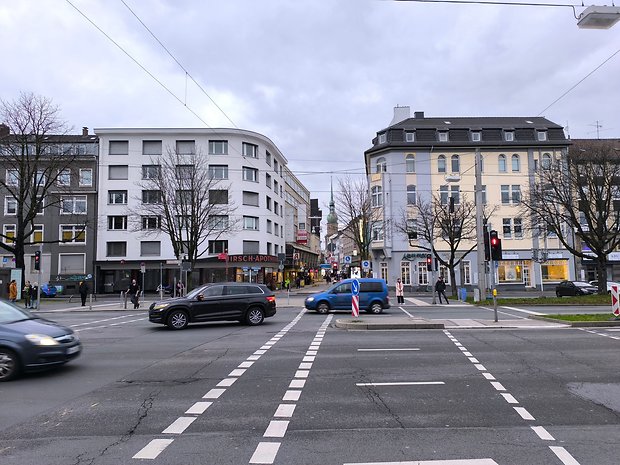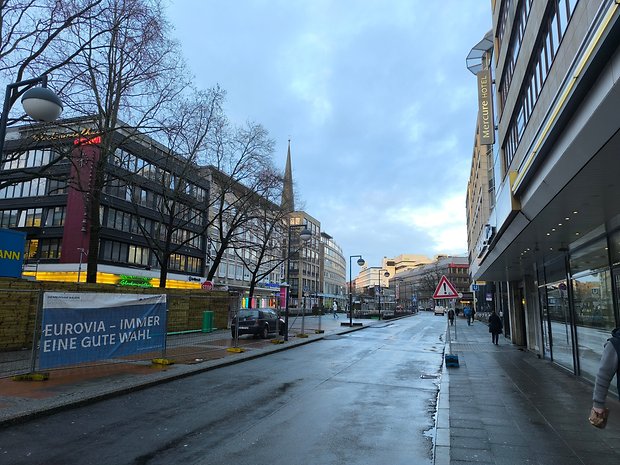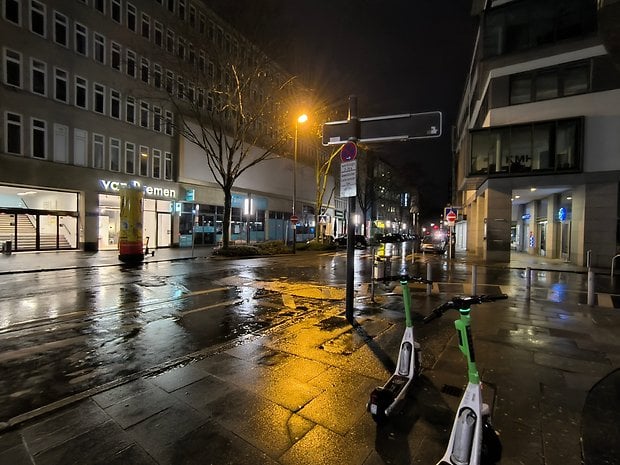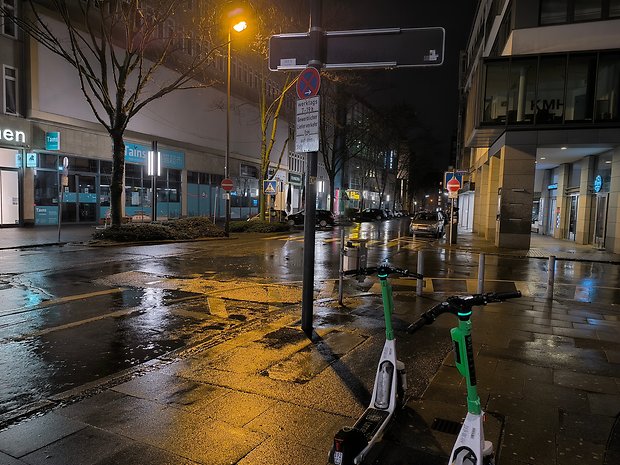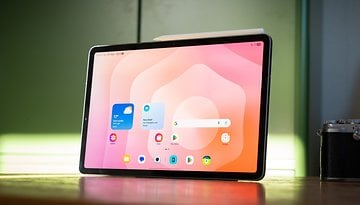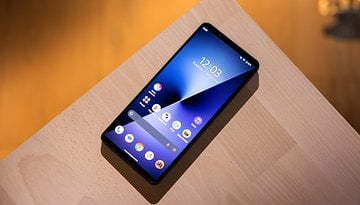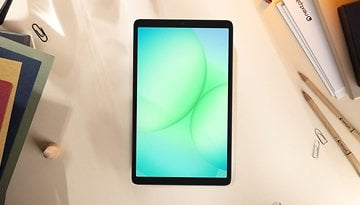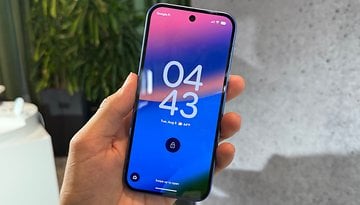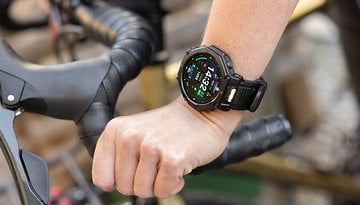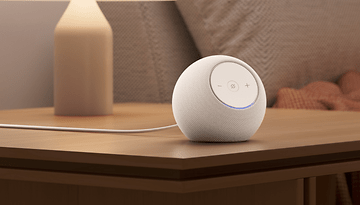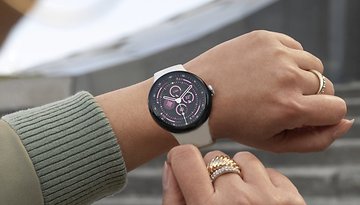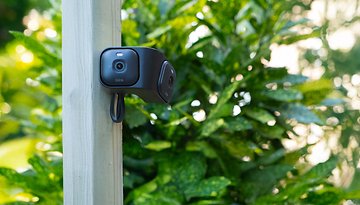Xiaomi Redmi Note 13 Pro+ Review: The Best Smartphone in its Class?
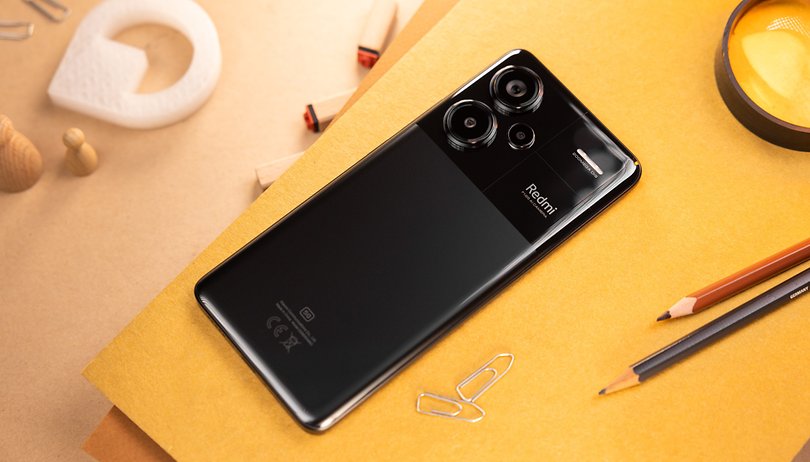

At the top of the new Redmi Note generation, which "only" includes five models, is the Xiaomi Redmi Note 13 Pro+. How good is the Android smartphone, which is powered by a MediaTek Dimensity 7200 Ultra, has a 200 MP main camera, and is available from 449 euros/$470? Yes, exactly: that's what we'll find out in this detailed review of the Xiaomi Redmi Note 13 Pro+.
Good
- IP68 certified
- Dual SIM + eSIM
- Good workmanship
- Fast charging
- Strong main camera
- Solid update policy
- Very nice display
- Gorilla Glass Victus front and back
- Really good price-performance ratio
Bad
- The unavoidable 2 MP macro cam
- No 3.5 mm jack connection
- "Only" MIUI 14 instead of HyperOS
- No wireless charging
- Bucketloads of bloatware
- No microSD
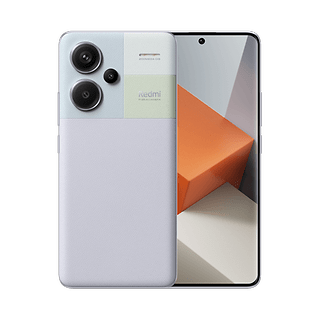
Summary and purchase
The Xiaomi Redmi Note 13 Pro+ 5G is the flagship of the series, which we notice in the decent performance, the 200 MP main camera, and the choice of materials, among other things. The curves—curved design front and back—also give it a much more sophisticated, sophisticated look than the rest of the series for my personal taste. The bloatware is annoying, but not really a problem. I am more concerned that this top model of the Redmi family is also delivered with Android 13 and MIUI 14 instead of Android 14 and HyperOS.
On the other hand, Xiaomi has promised at least three major software upgrades and four years of security updates, which again is something to be proud of. The photos with the 200 MP camera are also impressive, whereas ultra-wide angles with 8 MP and a 2 MP macro sensor fall significantly short. The battery life is solid and almost irrelevant thanks to the 120 W fast charging. However, wireless charging would also be nice in this price range.
Speaking of price: In Europe, the Redmi Note 13 Pro+ 5G is priced at €450. And as usual, the Xiaomi phone is not available in the US. Our test model came in the color Midnight Black, alternatively, you can also choose Moonlight White or Aurora Purple.
Design and display
The Redmi Note 13 Pro+ has a glass front and back, is also quite elegant in design and looks more premium than its siblings from the Redmi Note 13 generation. The bright AMOLED display is also beyond reproach with its 2,712 x 1,220 px spread over 6.67 inches.
Pros:
- Very nice, bright 120 Hz OLED display.
- The high-quality design breathes premium air.
- Gorilla Glass Victus over the display.
- IP68 certified.
- Fast fingerprint sensor in the display.
- Protective cover included in the scope of delivery.
- eSIM support.
Cons:
- Smooth, tilting, fingerprint-loving back cover.
- 3.5 mm headphone jack missing.
- No microSD slot.
Yes, I sometimes struggle a little with the design of Xiaomi phones. I accept it because Xiaomi usually packs a lot of technology into the device at a fair price and I realize that a 300-euro cucumber doesn't look like an iPhone or a Samsung Galaxy S24 Ultra, which somehow costs five times as much.
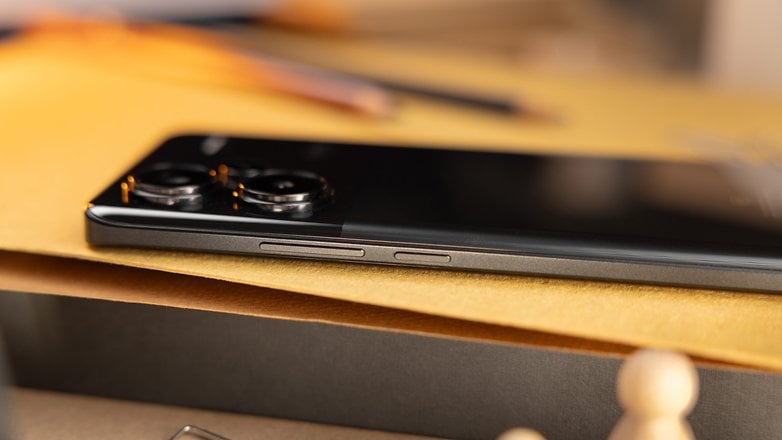
But here with the Note 13 Pro+, Xiaomi really catches me. The glass, which is used at the front (Gorilla Glass Victus in this case) as well as at the back, is rounded at the sides, which eliminates the "chunkiness" inherent in the other cheaper Xiaomi phones. Of course, I also realize that this is a matter of taste and that many of you don't like curved displays. Incidentally, the curved design of the Pro+ is not only exclusive to the Redmi Note 13 family—it is also the only model with IP68 certification.
The smartphone feels great in the hand, but also has a somewhat slippery back. The upper third with the camera section is polished to a high gloss, and the fact that the cameras protrude separately from the casing—similar to Samsung—instead of from a bulky camera island, reinforces the positive visual impression. The catch with this glossy surface: I'm not the only one who loves it, fingerprints do too. Incidentally, a cover is included that protects the device but also conceals the beautiful design.
Unfortunately, you won't find the 3.5 mm jack connection for headphones or the slot for the microSD card. Unfortunately, Xiaomi's device also falls short of the usual practice for high-end models in this respect. However, there are two speakers for stereo sound and a slot for two SIM cards—and the pleasing eSIM support should also be mentioned.
While there is nothing conspicuous on the left side, we see the usual volume rocker above the power button on the right-hand side. Both are finished and fitted to a similar high standard as the rest and, in my opinion, are also easy to reach. It may be that this looks a little different with smaller hands.
Display
The display is also worth a second look: All five Redmi Note 13 devices have a 6.67-inch panel, but not all of them have as high a resolution as the Redmi Note 13 Pro+, which offers an unusual 2,712 x 1,220 px. This results in a very decent pixel density of 446 PPI. The display also scores with a high maximum brightness of 1,800 cd/m² and the 120 Hz refresh rate. With the latter, you can alternatively switch to 60 Hz, but there is also the option to select "automatic".
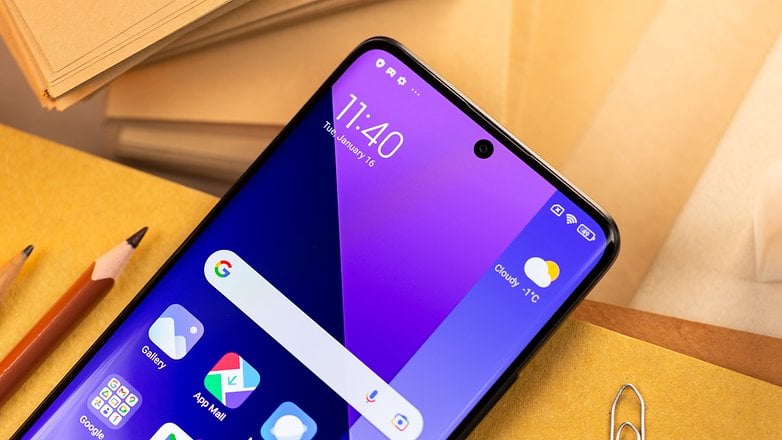
The DCI-P3 color space is utilized 100 percent, there is support for Dolby Vision and HDR 10+ as well as a fast and reliable fingerprint sensor at the bottom of the panel, so we can summarize: Yep, the display is so good that it certainly wouldn't stand out in a device twice as expensive. Well done, Xiaomi!
Xiaomi Redmi Note 13 Pro+ 5G software
It's business as usual in Xiaomi land: MIUI 14, Android 13, and a whole load of bloatware. The three-year Android support is absolutely commendable.
Pros
- Decent update policy.
- MIUI is still a very versatile and successful overlay.
Cons
- Bloatware all over.
- (Still) no Android 14, (still) no HyperOS.
It has now become a familiar Xiaomi tradition: In the camera section, I shake my head at the 2 MP macro snapper; in the software section, I cry about too much bloatware. This is also the case here, but it's probably the price we have to accept: Xiaomi is pushing the MSRP into the basement. As you know, you can easily throw all this stuff off the box.
Beyond that, I can't really tell you anything groundbreaking here either: My colleague Rubens also virtually ignored the software part in his review of the Redmi Note 13 Pro 5G. It doesn't make sense to list everything again in every Xiaomi test. Unfortunately, HyperOS and thus Android 14 did not make it onto the device, even though Android 14 has been on the market long enough. The update to HyperOS is still coming, of course.
There will be three major software updates and security patches will be distributed for four years, which is really great software support overall. At the moment, you can still make do with MIUI 14 (test) based on Android 13.
Performance and connectivity
The MediaTek Dimensity 7200 Ultra powers the Xiaomi Redmi Note 13 Pro+ and has up to 12 GB of RAM and up to 512 GB of storage at its side. The device doesn't tear up the competition, but it offers sufficient performance for everything you do or plan to do with the smartphone.
Pros
- Absolutely sufficient performance.
- No excessive heat development.
Cons
- Still no support for Wi-Fi 6E or even 7.
The spearhead of the Redmi Note 13 series naturally also deserves the most powerful processor, right? In this case, Xiaomi has opted for the MediaTek Dimensity 7200 Ultra, which was only presented last September as an optimized version of the Dimensity 7200 SoC launched in early 2023.
The SoC is manufactured with a 4 nm structure width and consists of two Cortex-A715 cores (up to 2.8 GHz clock rate) and six Cortex-A510 power-saving cores. Cameras with a maximum of 200 MP, LPDDR5 RAM, and UFS 3.1 memory are supported, which Xiaomi fully utilizes with the Redmi Note 13 Pro+.
The Dimensity 7200 Ultra does not exactly run the risk of catapulting the Redmi Note 13 Pro+ directly into the flagship smartphone class in terms of performance, but it is by no means disappointing either.
If we look at the benchmarks here, we can see in the "3D Mark Wild Life Stress Test" that the Redmi Note 13 Pro+ clearly outperforms both the second most powerful model in the Redmi Note 13 family and its direct predecessor, the Redmi Note 12 Pro+. The Galaxy A54 with Exynos 1380 is also easily straddled by the Note 13 Pro+, which then loses out to the Poco F5 and the Pixel 7a, as the Geekbench 6 test also documents. Take a look at our test results yourself:
| Redmi Note 13 Pro+ 5G (Mediatek Dimensity 7200 Ultra) |
Redmi Note 13 Pro 5G (Snapdragon 7s Gen 2) |
Poco F5 (Snapdragon 7+ Gen 2) |
Galaxy A54 (Exynos 1380) |
Google Pixel 7a (Tensor G2) |
Redmi Note 12 Pro+ (Dimensity 1080) |
|
|---|---|---|---|---|---|---|
| 3D Mark Wild Life Stress test |
Best loop: 4,306 Worst loop: 4,276 |
Best loop: 3,050 Worst loop: 2,754 |
Best loop: 7,632 Worst loop: 7,582 |
Best loop: 2,840 Worst loop: 2,804 |
Best loop: 6,590 Worst loop: 4,980 |
Best loop: 2,281 Worst loop: 2,268 |
| Geekbench 6 | Single: 1,107 Multi: 2,685 |
Single: 889 Multi: 2523 |
Single: 1107 Multi: 4232 |
Single: 1,022 Multi: 2,889 |
Single: 1,417 Multi: 3,549 |
Single: 965 Multi: 2408 |
| PCMark Work 3.0 | 12.230 | 13.047 | 14.335 | 13.477 | 10.532 | 11.855 |
In the stress test, the SoC heated up to a maximum of 32 degrees with a stability of 99.7 percent. It got a little warmer when playing Genshin Impact for a longer period of time. When I got behind the virtual steering wheel in Asphalt 8, the smartphone remained cool to the touch. As far as gaming performance is concerned, you shouldn't expect anything miraculous, but you can play most games painlessly and without any problems.
Let's move on to connectivity: Naturally, the top model in the Redmi series uses the 5G network and if you like, you can stuff two SIM cards into the device. As I mentioned above, you can also store one of them as an eSIM. What else is there to say? NFC is on board, as is Bluetooth 5.3, and you can be located to within one meter using GPS.
Xiaomi Redmi Note 13 Pro+ 5G camera
The 200 MP main camera is undoubtedly at the top of the Redmi Note 13 Pro+'s triple cam. The rest falls behind it quite clearly. I'm talking about the 8 MP ultra-wide-angle cam and the usual macro nonsense.
Pros
- Powerful main camera impresses during the day and at night.
- The 200 MP mode offers a high level of detail and is by no means just a marketing gimmick.
Cons
- There it is again, the 2 MP macro sensor.
- The ultra-wide-angle cam is okay at best.
I'll tell you something: I love smartphones with good cameras, but I'm also super limited when it comes to the versatility of my snapping skills. In other words: I like to take a quick shot and am happy when the result looks great, but I rarely get lost in the pro settings and sometimes forget that I could actually take panoramic pictures or slow-motion videos, etc. I take photos as memories, for social media and of course as proof to discredit my best friends.
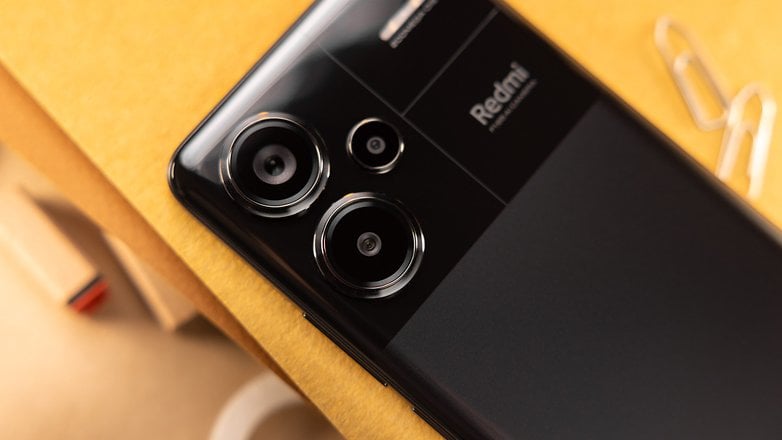
Why the long introduction? To say that I'm really happy with the main camera! Most of the time, I'm not even interested in the 200 MP mode because the 16-to-1 pixel binning and the resulting 12.5 MP photos are simply great. The images are crisp, very dynamic and the color reproduction is quite realistic. Of course, the 200 MP mode teases a lot more detail out of your subject, but most of the time this is simply not necessary.
The 200 MP cam also works perfectly at night. Here too, the camera's high resolution is impressive, but the combination of 12.5 MP images and night mode also delivers extremely satisfactory results for this price. Incidentally, I like the fact that I can easily select the 200 MP mode directly in the normal view of the camera. Sometimes the mode for high-resolution photos is buried much deeper in the app. I would like to point out that these 200 MP can represent real added value and are not just a marketing tool so that Xiaomi can show off a high number.
The following image should illustrate why it makes more sense to take a 200 MP photo and crop the desired subject instead of using the 4x zoom:

Let's not waste too many words on the other cameras. The ultra-wide-angle shooter with its 8 MP offers pretty much exactly what we can expect in this price range, but by no means more. I get pretty decent pictures, which of course turn out better the better the light is. Sometimes I lose too much detail towards the edge of the picture and I also think that the actually good color reproduction there sometimes drifts into something too pale.
If you want to take photos at night with the ultra-wide-angle camera, I strongly recommend night mode, which can save many a photo. Without night mode, I'm not convinced by the results. It may sound a bit too negative, but the ultra-wide-angle sensor is actually "okay". The same can't be said for the 2 MP macro sensor. That's it, not another word about this third sensor, which only fulfills decorative purposes.
Selfies are possible with 16 MP and are also reasonably satisfactory. In portrait mode, I noticed that I didn't get a completely clean crop if I fidgeted a little too much when taking the photo or was in motion. Apart from that, the mode does a good job.
Do I miss a telephoto camera? Yes, maybe, even if the 2x zoom performs really well. With some compromises, the 4x magnification is still possible. But to be honest, we're still talking about a 450-euro phone here—in view of the smartphone's existing qualities, I tend to forget that from time to time.
Battery and charging
The battery life of the Redmi Note 13 Pro+ 5G is decent, but this is almost irrelevant as the 5,000 mAh battery is pressurized with 120 W. Unfortunately, the device does not offer a wireless charging option.
Pros
- Fast charging with 120 W.
- Charger in the packaging.
- Decent battery life.
Cons
- No wireless charging.
We've known it for years: Xiaomi has always played for the title in the fast-charging World Cup. It is therefore a matter of honor that the most powerful new Redmi model is also equipped accordingly in this discipline. Thanks to the 120 W output of the charger supplied with the smartphone, you need just under 30 minutes to fully charge the 5,000 mAh battery to 100 percent when the display is switched off.
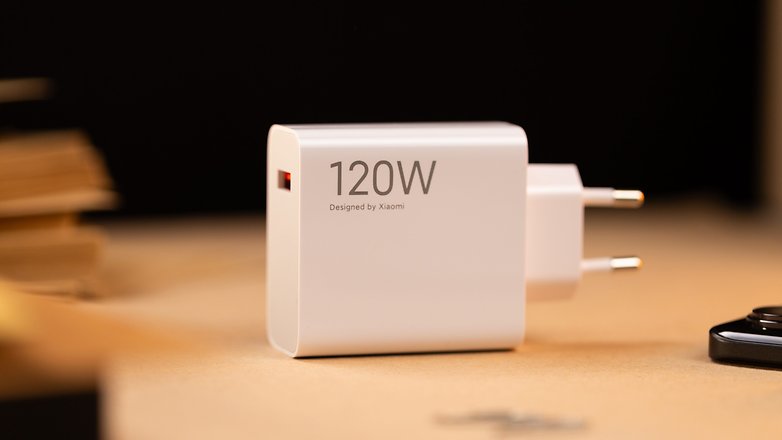
In the test, just five minutes at the socket was enough to give the phone a 20 percent battery charge. The benchmark test gave me a value of 13 hours and five minutes, which is actually pretty average—but that's not a bad thing. In the practical test, I went to bed with 30 percent battery remaining after a day of intensive use.
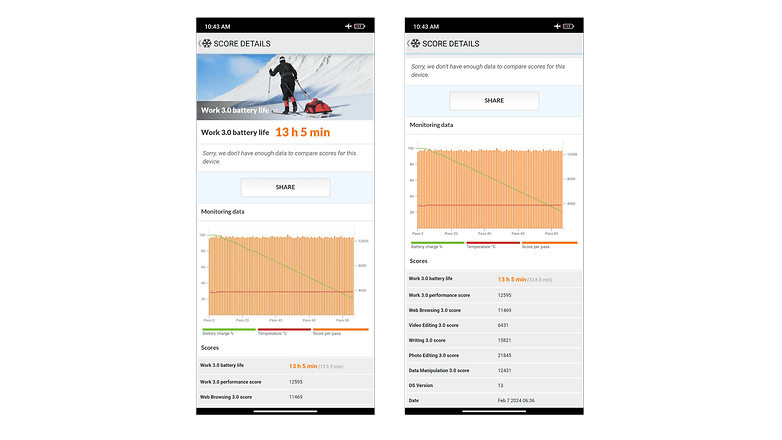
We don't need to say much more about it—apart from the sad fact that the Redmi Note 13 Pro+ 5G unfortunately does not support wireless charging.
Xiaomi Redmi Note 13 Pro+ 5G technical specifications
| Xiaomi Redmi Note 13 Pro+ 5G | |
|---|---|
| Picture |  |
| Price (RRP) |
|
| Display |
|
| SoC |
|
| Memory |
|
| OS |
|
| Camera |
|
| Selfie camera |
|
| Battery capacity |
|
| Connectivity |
|
| IP certification |
|
| Dimensions and weight |
|
Conclusion
The Xiaomi Redmi Note 13 Pro+ is a good smartphone, even a really good one. The AMOLED display completely convinces me, as does the main camera with 200 MP and the fast charging with 120 W. The smartphone is prettier—for my taste—than many other inexpensive smartphones and also has a high-quality finish.

Another positive aspect is that you will be provided with security updates for up to four years, although Android 13, which is no longer quite as fresh as it used to be, leaves a somewhat bland aftertaste. I would like to say one thing about the points of criticism: Yes, I am grumbling about the fact that there is no wireless charging, no telephoto camera and the ultra-wide-angle camera is rather "average". But don't forget that you can buy this slicer from 450 euros and I'm complaining at a really high level here.
I'm convinced that people who mainly use the main camera anyway, don't play the most technically demanding games and don't have a curved display phobia will be absolutely happy with this smartphone. I recommend the following link for alternatives if you fall in those groups. There you can see what other models in this price range have to offer.
I'm currently wondering whether 4.5 stars is too many for this beautiful and highly functional device. And you know what? No, it's not—especially if we put what's on offer in relation to the price!

